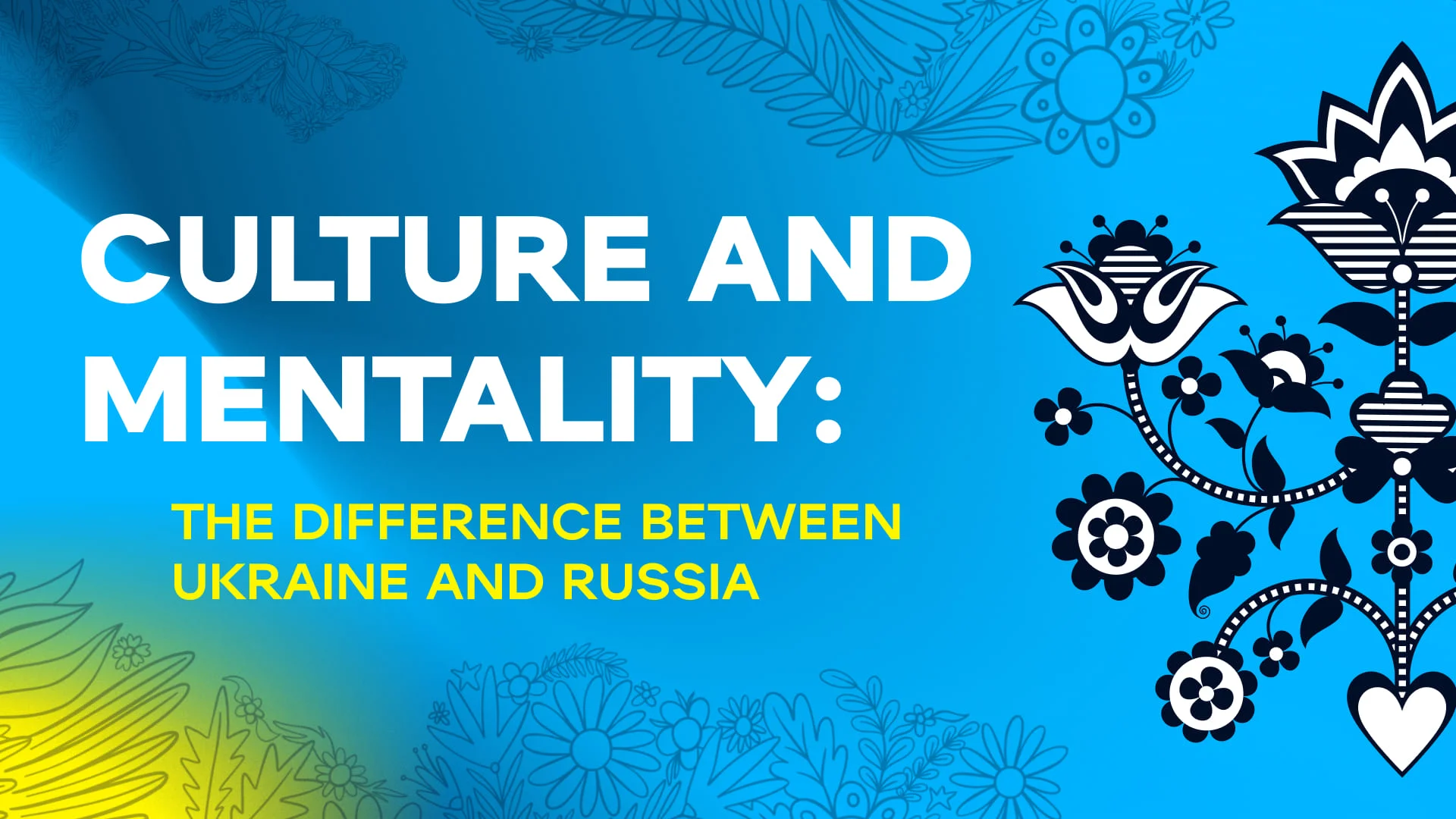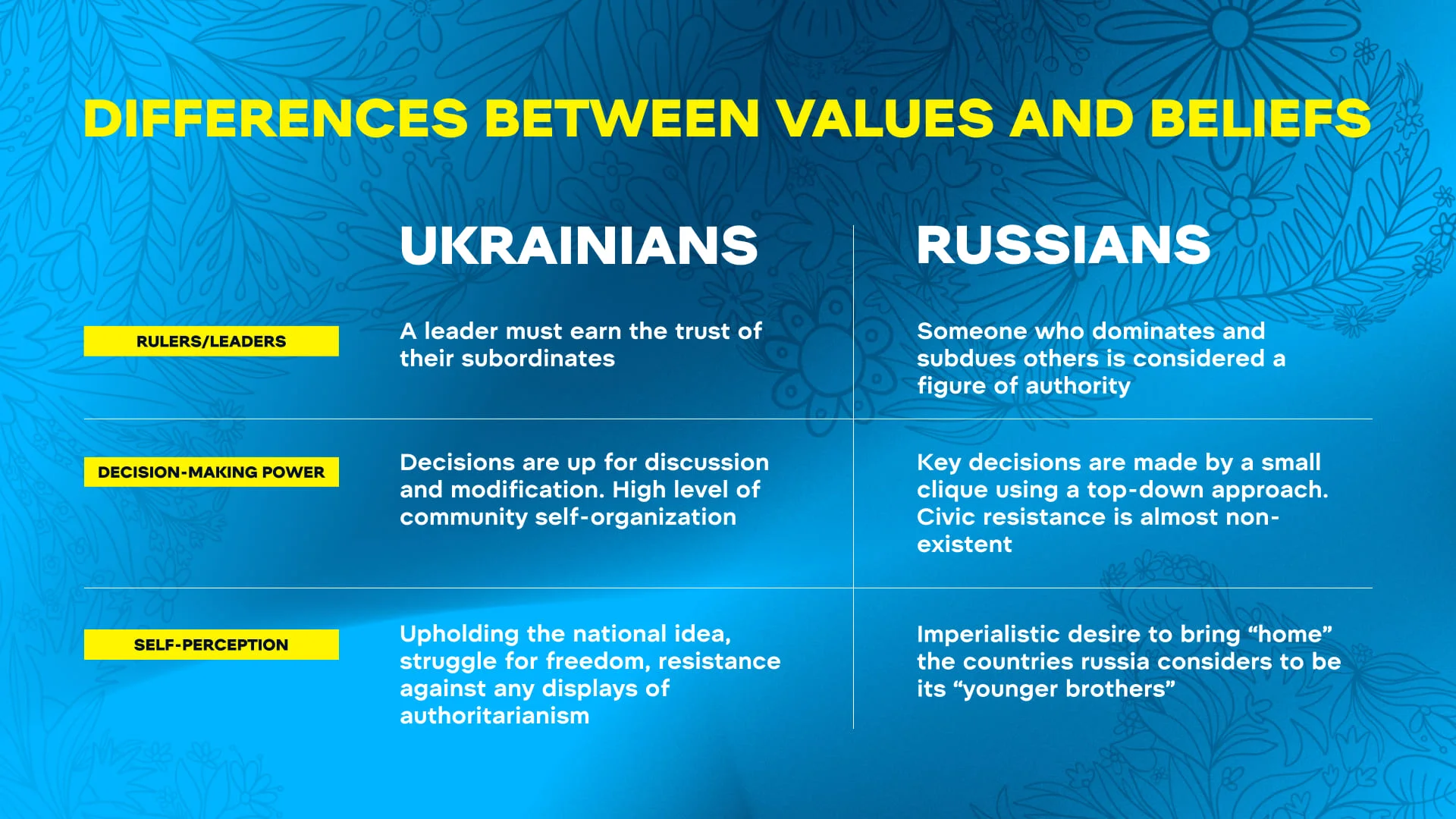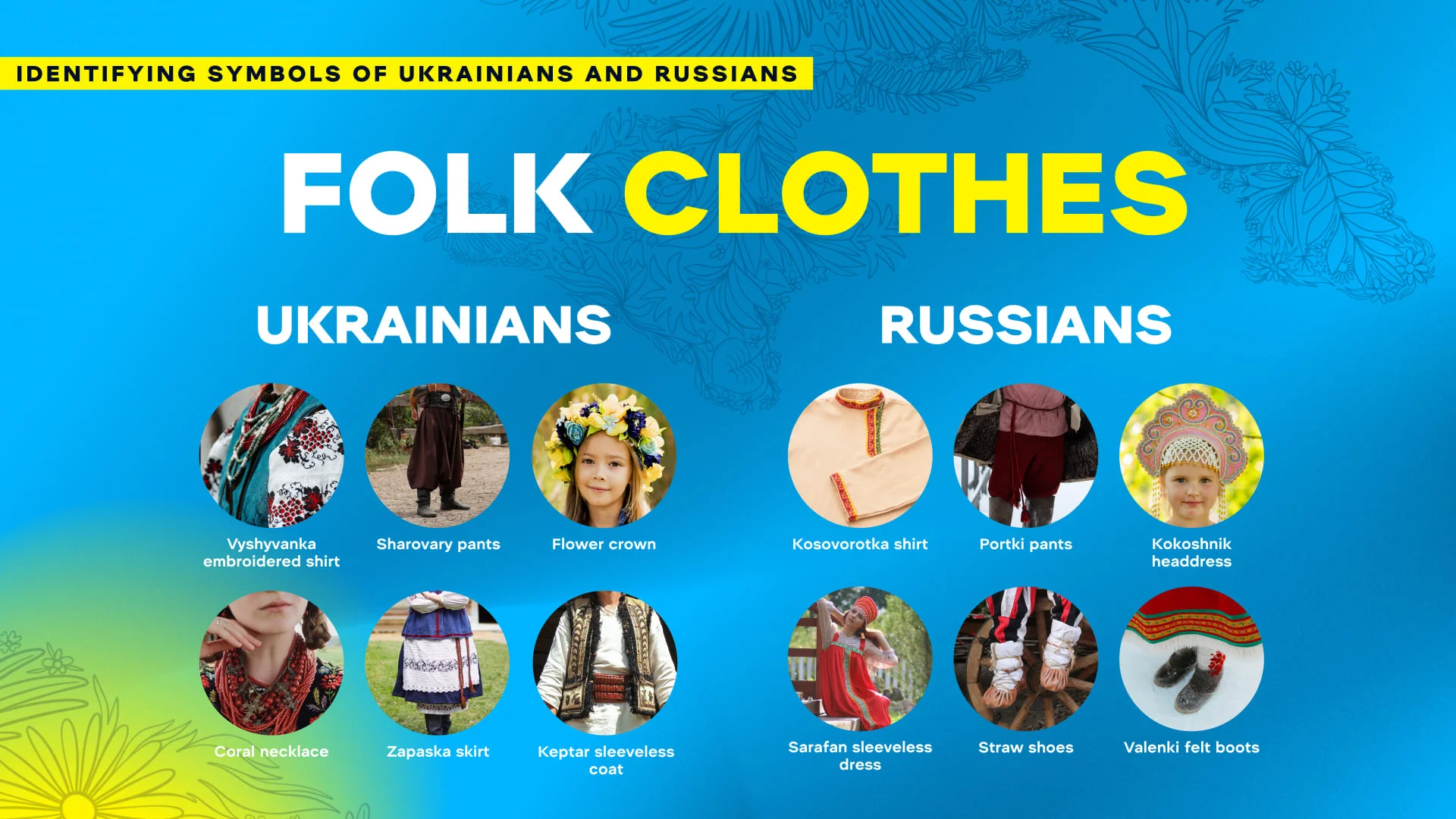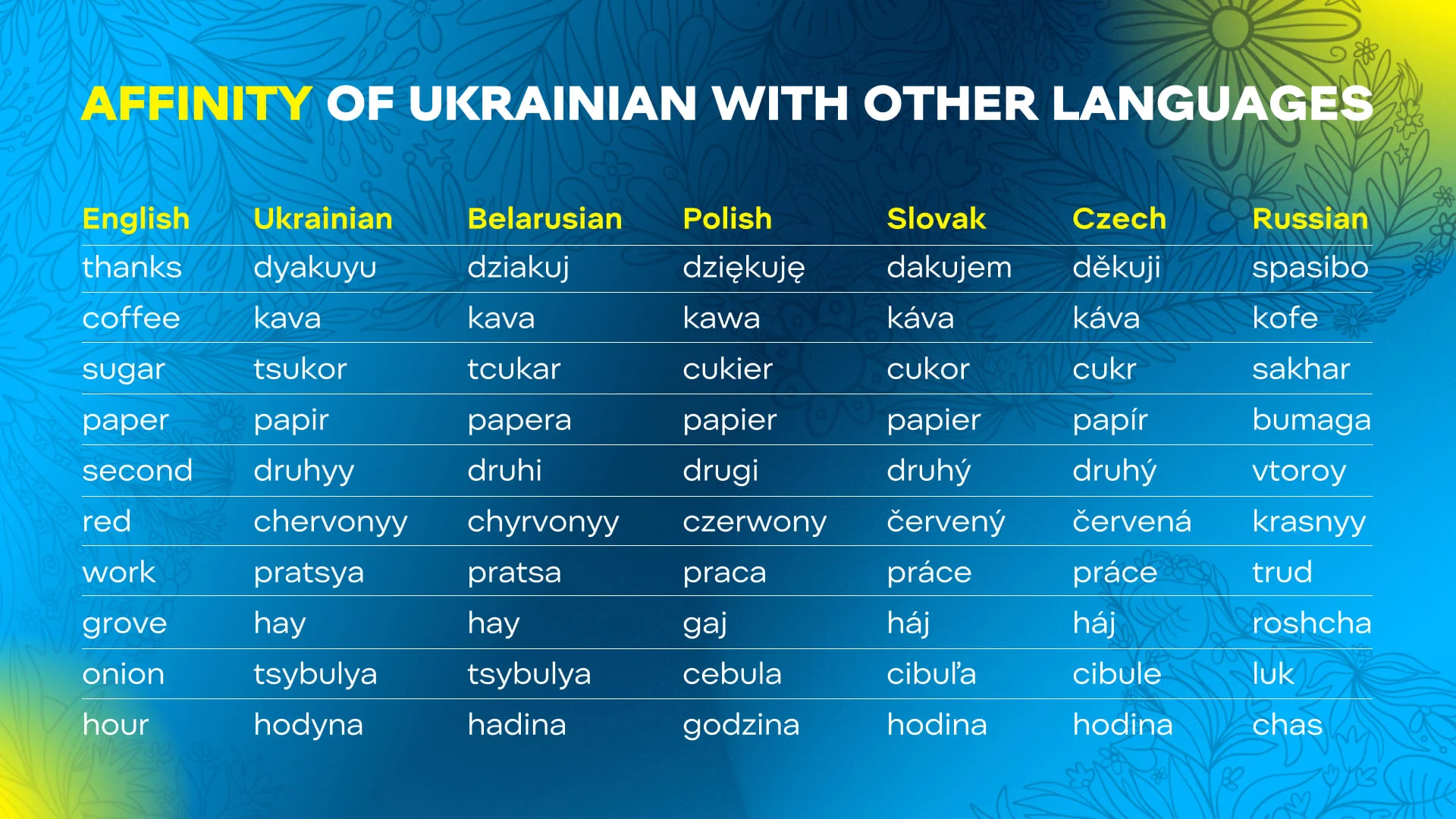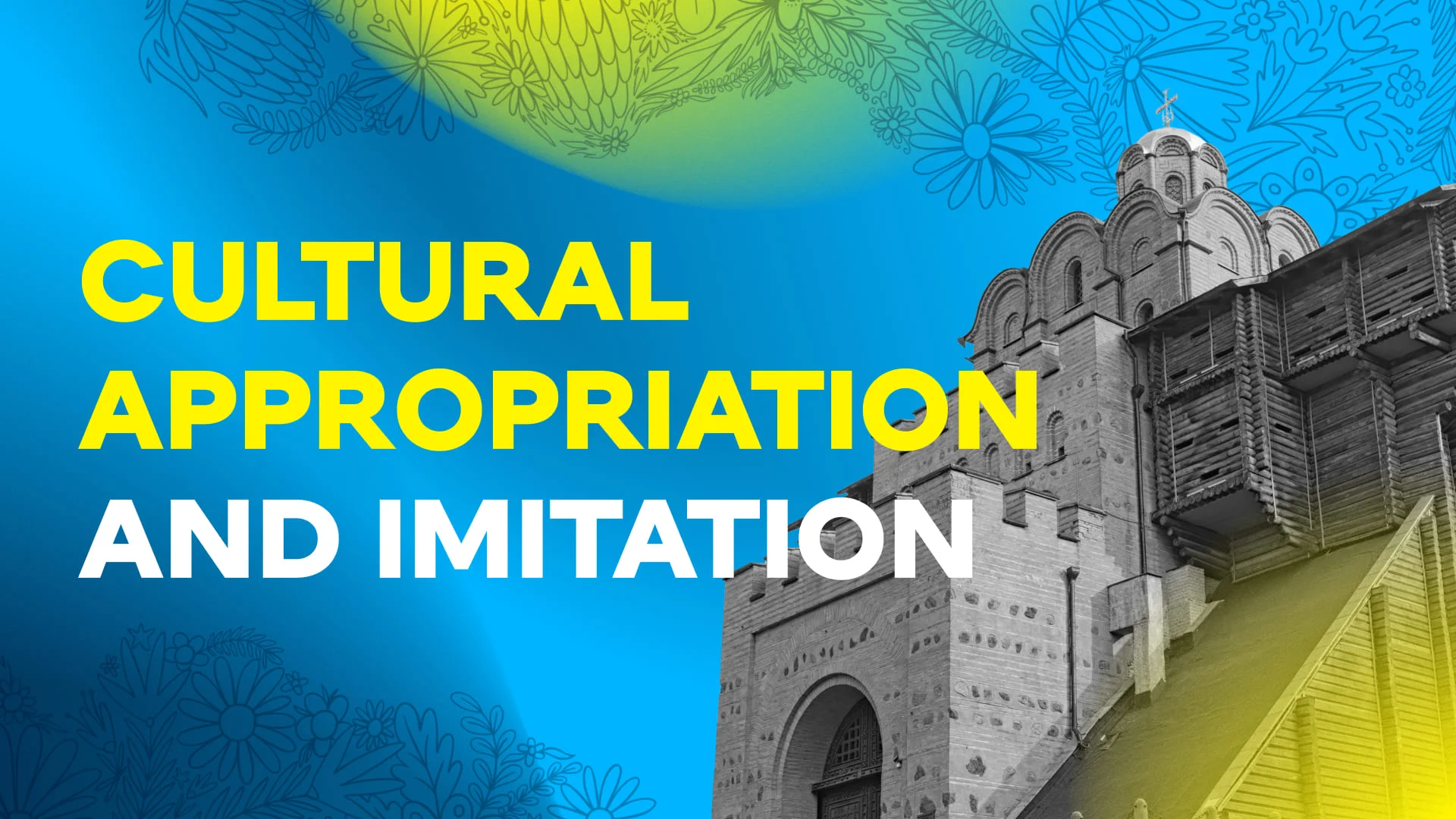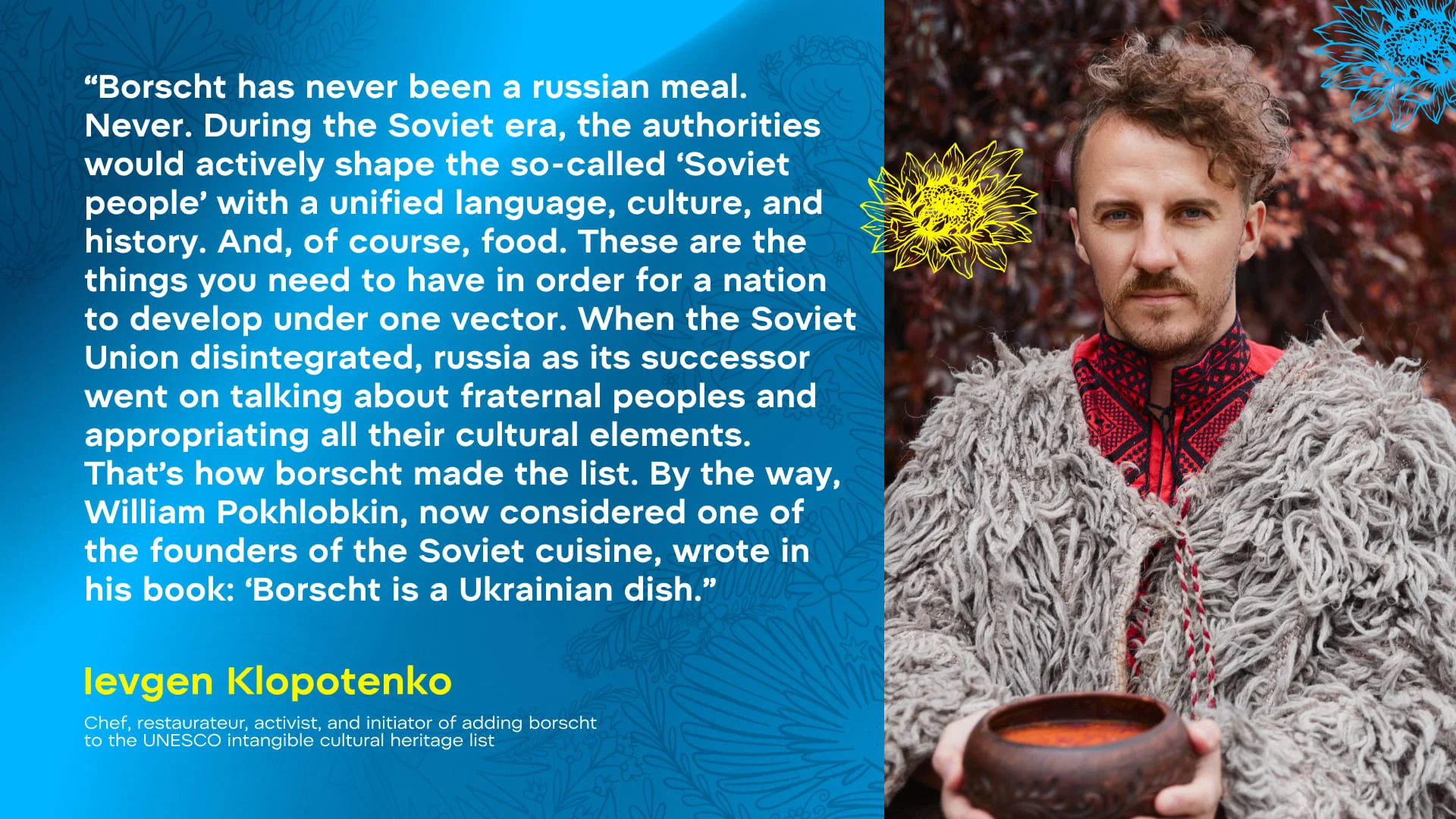July 14, 2022
Fraternal nations? Debunking propaganda myths about Ukrainians and russians
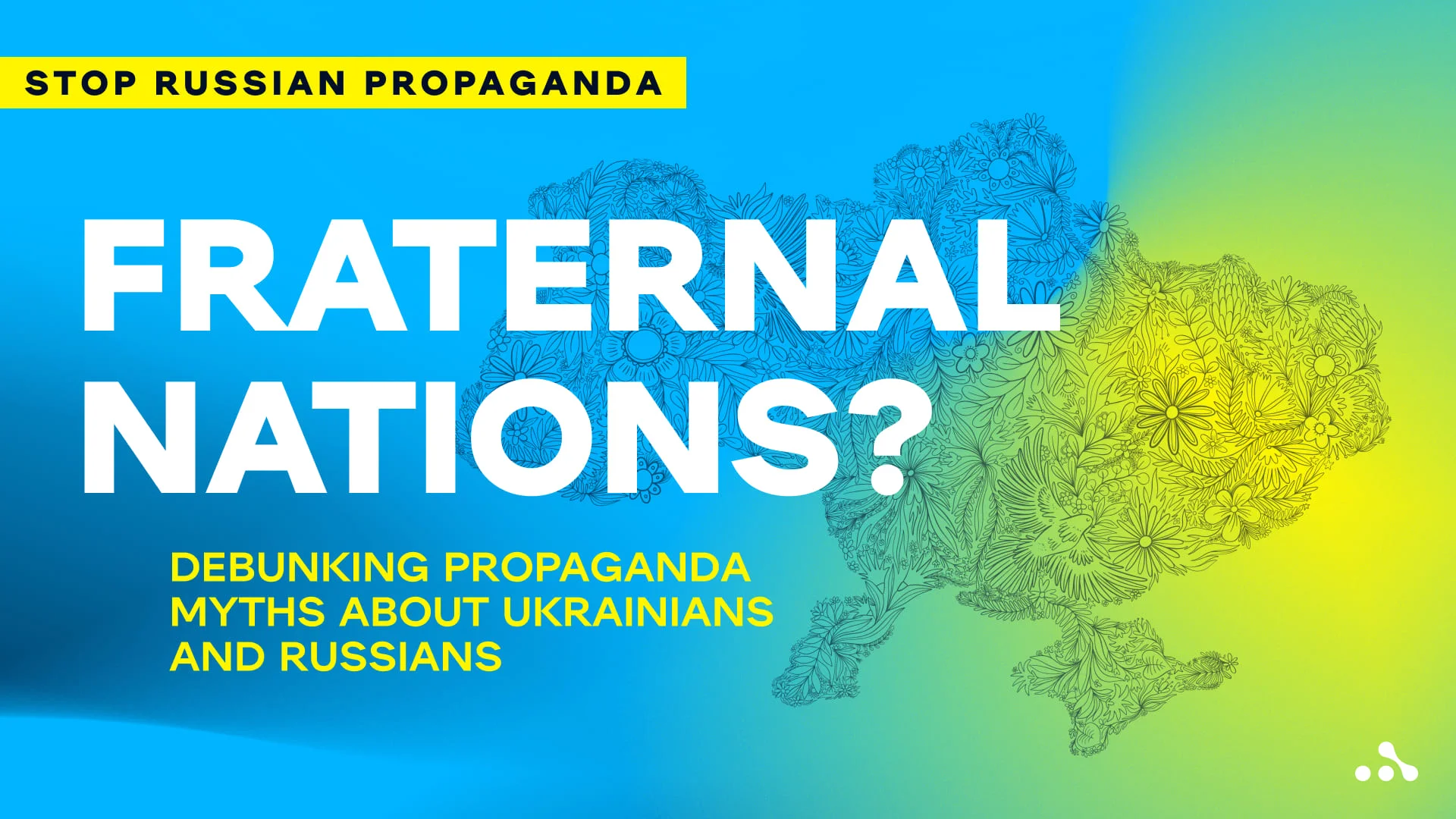
15 min read
Ukraine is once again defending its independence. So why is the scenario of “fraternizing” with russia impossible for Ukrainians?
According to russia, Ukraine has no right to independent historical choice. Appealing to a common history, a shared religion, and similar culture, putin calls Ukrainians and russians “one nation,” which he is currently trying to reunite by waging a bloody war. The kremlin’s goal is to convince the world that Ukraine is a “failed state,” so, as the “big brother,” russia is helping its “immature” neighbor to restore order in their own country. russia has been polishing the justifying narrative for the attack on Ukraine to present to the world long before it started the war. The kremlin’s media propaganda mouthpieces in the West would brazenly falsify historical facts and appropriate other peoples’ history for years. However, the world should remember that Ukraine is not an appendage to russia but a sovereign state with political, national, and cultural autonomy, as well as a more than a thousand-year-long history. This article is intended as a sort of guide on Ukraine and Ukrainians, as well as on their differences from russians.
Culture and mentality: the difference between Ukraine and russia
The “fraternal nations” myth is a sick work of propaganda formed in soviet times. However, even as late as day 48 of the russia-Ukraine war, when the world had already seen footage of war crimes committed by the russian army in Bucha, Borodianka, and Hostomel — satellite towns to Kyiv, — Emmanuel Macron still did not consider the situation in Ukraine a genocide. Moreover, in an interview for the France 2 TV channel, the French president called Ukrainians and russians “brothers.” This is one of the consequences of the “russian world” ideologists’ long-term influence on Europeans’ consciousness. However, the fictitious close connection between the Ukrainians and russians is nothing more than a propaganda narrative. In fact, there are major disparities between the two nations, research indicates.
In order to understand the difference between Ukrainians’ and russians’ national cultures, one has to go through their thought patterns passed down from generation to generation. In a study that disproves the myths about the brotherhood of Ukrainians and russians, Maryna Starodubska, associate professor at the Kyiv-Mohyla Business School, notes that for Ukrainians, such patterns are freedom, flexibility, and the lack of obligation to follow rules (rules can be ignored in favor of human relations), while russians lack the ability to take responsibility for their own lives and make decisions (“the higher-ups” know better, so one has to obey authorities).
russians and Ukrainians also have different values and beliefs. For example, for a russian, a ruler/leader who holds authority is someone who has the ability to dominate and subdue. At the same time, Ukrainians believe that a leader should earn the trust of their subordinates. If the leader does not inspire confidence, they can be overthrown.”
Starodubska notes that on the “individualistic-collectivist” spectrum, Ukrainian and russian societies are both collectivist, but there are differences there as well.
“Ukraine is historically a vertical collectivist society. However, due to the lack of blueprint for obedience under pressure, Ukrainians may ‘overturn’ an illegitimate chief or go on working without them, relying on horizontal connections and agreements. Also, due to the aversion to authoritarianism or conquest by culturally dissimilar aggressors and the tradition of local self-organization, horizontal collectivism, balancing out the historically rooted vertical one, can also be felt in Ukraine.
On its part, russia is an invariably vertical collectivist society. The nature of collectivism in Russia is such that ‘horizontal’ practices (dialogue, persuasion through explanation and argumentation, encouragement of thinking and decision-making autonomy) have been suppressed in society for decades. Therefore, negotiations, adherence to agreements, open exchange of information, and other non-coercive interaction tools are not just something alien to russia and the russians — they are considered signs of weak, unstable regimes and unreliable people,” explains Maryna Starodubska.
Ukraine is one of the countries that have a democratic society model. Among other things, there hasn’t been any authoritarianism in Ukraine due to historical factors: rulers, both own and conquerors, would often change, there was a wide variety of political views, and democracy took root in the territories that once belonged to Austria-Hungary. Meanwhile, russia is an authoritarian country ruled by one person. Democracy is very dangerous for russia, because then, the general population will start thinking independently, and it will be impossible to control it through forced submission.
“For russians, it is important to not only be different from others in terms of status but also to dominate lower-ranking members of the group (to the point of violence and coercion) and to find every possible way to demonstrate a level of influence that gives access to opportunities for interaction with people of comparable status. In such a culture, sacrificing one’s own interests for the sake of the group is not just the norm but expected by default. In such a society, representatives of other groups are ‘aliens’ and therefore ‘enemies’ of sorts,” says Starodubska.
These and other factors disprove the myth of “one nation,” which Ukrainians and russians have never been. The russians have been spreading a pseudo-scientific narrative upholding our sameness for a long time, laying the ground for russia’s military invasion of Ukraine.
Triunity of the peoples of Ukraine, russia, and belarus
Another myth of the russian propaganda claims that Ukraine, russia, and belarus are a triad of unified nations, tied together by common Slavic roots. This assertion first cropped up in the 19th century and was especially widely circulated during the rule of the totalitarian communist regime, when Soviet historians invented a single ancient russian nation, which also had certain regional differences. According to this theory, historians would distinguish russians (great russians), Ukrainians (Little Russians), and belarusians. In russian historiography of the 19th century, the national community of Rus was actually identified with the russian nationality. Medieval Rus with its center in Kyiv was considered the cradle of the three “brother” nations.
In fact, historians debunk the triunity of peoples myth starting as early as the stage of ethnic group formation. To find evidence refuting the inventions of russian pseudo-scholars about the common Slavic roots of the three peoples, historians, and Petro Kraliuk in particular, suggest taking a look at where the Slavic tribes settled in the middle of the first millennium. The maps show that next to no Slavs lived in the territories forming part of today’s russian federation and the republic of belarus.
Later on, starting from the end of the 9th century, when the state of Rus began to form, the territory of modern-day belarus was mostly inhabited by Letto-Lithuanian tribes. Soon after, these territories were colonized by the Slavs. As a result of this colonization, a new ethnicity was formed, with Letto-Lithuanian, not Slavic, basis. The russian ethnicity was formed primarily of Ugro-Finnic people, as well as Letto-Lithuanians and Slavs. All along, it was the Slavs who formed the cultural and political elite of the russian ethnic group. Later on, during the Tatar invasion led by Batu Khan, a Turkic element joined in shaping the russian ethnicity.
“Speaking of the triunity of Slavic peoples — Ukrainians, russians, and belarusians, — what do we mean by the russian people? russia is a huge country encompassing a lot of ethnic groups. For example, the Buryats have their own culture, diverse and interesting (or at least it used to be that way). They also have different religious beliefs — traditional Buddhism, not Christianity. If we narrow it down to the Slavic part of russia, which the russians present as the titular ethnic group, we will see a lot of issues. They are present in the country in much fewer numbers than other nationalities. If you look at the tribal unions formed there, turns out the Ukrainians do not have any common tribe or relation whatsoever with the russians. The russians do have the Kryvychs in common with the belarusians, but they are not a large group. So, the premise of a triune nation falls apart when we analyze the historical aspect,” says Kateryna Godik, philology Ph.D., junior research fellow at the Department of Literary Theory and Comparative Studies of the National Academy of Sciences.
Also, one can’t imagine a triune ethnic group without a common language for all of its regions. The written and literary language of ancient Kyiv was used throughout the territory of Kyivan Rus. However, this language was to some extent artificial, with a lot of old Church Slavonic words, complex stylistic structures, supra-dialectic, and alien to most ordinary people. Thus, historians believe that such a written and literary language could not claim to be common to the supposedly existing ancient Rus nation.
In fact, in the times of Rus, the vernacular speech was a collection of many closely related but distinctly different dialects, which did not constitute a single East Slavic language. These dialects of ancient Rus laid the foundation for the modern russian, Ukrainian, and belarusian languages, but each would go on to develop under different conditions. As linguist Paul Jorgensen explains, language development paths were determined in particular by the influence of the conqueror states, so the Mongol Empire would influence the russian language, while the Polish-Lithuanian Commonwealth and the Grand Duchy of Lithuania would impact Ukrainian and belarusian.
“If you look at historical processes and laws that govern the development of peoples and languages, it will turn out that the premise of a triune nation is a very weak one. Historians from Ukraine’s National Academy of Sciences speak of an overall tendency to decrease the number of languages and toward the assimilation of nations. So, according to these laws, if there really was a triune nation, it would still be triune now, and three languages wouldn’t have appeared before the beginning of the 18th century. At most, the belarusian language could be expected to decline, because the people in the country are fewer in number. So, this thesis contradicts the very logic of human development,” says Kateryna Godik.
People worldwide often get confused about the Ukrainian and russian languages: they are mistakenly considered to be the two most closely related Slavic languages, or even the same language. However, lexical analysis shows that Ukrainian has the greatest affinity with belarusian — 84%, Polish — 70%, and Serbian, with which it shares 68% of cognate words. russian has only 62% overlap with Ukrainian — that means Ukrainian and russian vocabularies are radically different by 38%. As an example, Jorgensen cites Spanish and Italian, whose vocabularies differ by 33%, and French and Portuguese — 39%.
It’s worth noting that there are also significant differences between Ukrainians and russians in traditions, customs, rituals, and folklore.
“Ukrainians’ traditional musical folklore is an autonomous culture in its own right, consisting of a certain number of layers. Our ancient ancestors have created lots of songs: if you count just the types of ritual melodies, there will be more than 200. Each melody had 50 or more associated lyrics. They are unique ethnic markers because they are only used by Ukrainians. However, there are also common markers with some neighboring ethnic groups, in particular with Poles and belarusians — their ritual songs have the most similarities with the Ukrainian ones.
The russians’ ritual songs were of a completely different type: if the songs of the European tradition were built on a syllabic system, in the russian tradition, the poem structure is focused on an accent system, which is fundamentally different. These distinctive types of musical rhythmic were formed in very ancient times and align with archaeological cultures at the turn of the current era (this is clearly visible when comparing ethnomusical and archaeological maps). That’s why they testify to the profound differences between the ethnic substrata of the group of the so-called Slavic-Baltic ethnicities and our eastern neighbors, who switched to a Slavic language later,” says Iryna Klymenko, doctor of arts, ethnomusicologist.
Cultural appropriation and imitation
Propaganda methods used by the kremlin are substitution of concepts, distortion of facts, and appropriation of other countries’ historical heritage. One example of such a phenomenon involves historical figures from the times of Kyivan Rus.
Anna Yaroslavna (about 1032 — between 1075 and 1089) was one of the iconic figures of the Kyivan Rus times: she was the daughter of Yaroslav the Wise, wife of Henry I, and queen of France. In 2017, during a meeting with French President Emmanuel Macron when inaugurating an exhibition to mark the 300th anniversary of the visit of russian tsar Peter I to France, Putin said that Anna Yaroslavna “laid the foundation of russian-French relations.” This statement has no historical basis whatsoever, just as the russian propaganda machine has no brakes because in fact, the territories of modern-day Ukraine, russia, and belarus made up Rus with Kyiv as its capital city at the time. Thus, there is no way Anna can be seen as the progenitor of the russian federation. This is not an isolated case of russia’s appropriation of other nations’ history.
At the World Economic Forum, Princess Olga (about 893/920–969), the first ruler of Rus to be baptized, was included in the list of women who changed world history as “ruler and founder of modern-day russia.” However, like Anna Yaroslavivna, Princess Olga had nothing to do with the formation of the russian federation. Later, after Ukrainian diplomats complained, the WEF removed Princess Olga from the list altogether “due to contradictory historical information.”
Esports did not escape kremlin propaganda, either. In the media landscape, Kyiv-based Ukrainian esports team NAVI has been mistakenly called russian or russian-Ukrainian. This is how the russian mass media usually put it, but foreign media may also pick up the disinformation they spread. russian citizens have indeed played for team NAVI at different times. For example, in 2021, when NAVI won the CS:GO tournament PGL Major Stockholm 2021, there were two russians on the roster. However, this by no means makes the team russian. If we follow a similar logic, russian Team Spirit, where two Ukrainians play, should be called Ukrainian, but Ukraine does not try and appropriate it.
Neither do the russians shy away from encroaching on the culinary heritage of Ukraine, borscht being the main symbol. The borscht battle with the russians started even before the russia-Ukraine war. In particular, a tweet on the official account of the russian ministry of foreign affairs called borscht “one of the most beloved russian dishes and a symbol of national cuisine.” Not every Western observer is likely to see such a statement as a threat. However, even occasional mentions of borscht as a russian dish in the public sphere have consequences. For example, representatives of Michelin, the most influential restaurant ranking in the world, wrote in one of their articles that borscht and rassolnik were “emblematic national soups of russian cuisine.” After a wave of criticism, in particular from Ukrainian readers, Michelin representatives apologized and corrected the erroneous statement, saying instead that the russian culinary scene “celebrates vegetables and fragrant herbs that give lively, authentic flavor to dishes that are favorites among gourmets, including rassolnik and borscht in all its delectable forms.”
It was recently confirmed that Ukrainians have finally won the battle for borscht. Ukrainian borscht was included in the UNESCO list of intangible cultural heritage in need of protection. This happened thanks to the enthusiasm of chef, restaurateur, and public activist Ievgen Klopotenko.
“When I started researching Ukrainian gastronomy, I learned a very surprising thing: in 1,500 years, borscht was never officially proclaimed Ukrainian. I was shocked, and I decided I had to defend our borscht both in the national and international scenes. I also created the ‘Institute of Culture of Ukraine’ NGO and sent my team on a ‘borscht expedition.’ The goal was to collect family recipes for borscht from all over the country and record them as a national memory. In parallel with the expedition, we carried out a lot of groundwork collecting and approving documentation — and managed to get borscht included in the National List of Elements of the Intangible Cultural Heritage of Ukraine. This event started a huge information wave in the world because borscht is not just a dish. It’s a national treasure. This event, after all, was the first step on the way to including borscht in the UNESCO intangible heritage list. It has long been not about food but about Ukrainian national identity — inside and outside the country,” says Ievgen Klopotenko, chef, restaurateur, activist, and initiator of adding borscht to the UNESCO intangible cultural heritage list.
In March 2021, Ievgen Klopotenko got confirmation that UNESCO accepted the application and would examine all documents. And on July 1, 2022, it happened — Ukrainian borscht got UNESCO protection.
By the way, Ukraine joined the UNESCO Convention for the Safeguarding of the Intangible Cultural Heritage in 2008. Since then, four elements of Ukrainian culture have made the international list: Petrykivka painting, Kosiv painted ceramics (Subcarpathia), Cossack songs of the Dnipropetrovsk region, and ornek, the traditional Crimean Tatar ornament, now joined by borscht.
russia’s war against Ukraine did not start when the first missile hit its target in February 2022 — russian propaganda has been laying the foundations brick by brick for decades. At a time when Ukraine is striving to follow its own path as a free sovereign state, the “big brother” is trying to forcefully return it under the iron heel of the Soviet nations’ pseudo-family. However, historical facts and research prove that neither a “triune nation” nor “one nation” have ever existed — these are all artificial narratives invented by propagandists. That is why it is necessary to combat propaganda, debunking myths that mislead the whole world.
“Propaganda is a weapon. If propaganda is not countered, falling under its influence is only a matter of time. Unless you are a professional, you can’t resist it, so reading russian resources is absolutely not advisable for those for whom it’s not a job. Sadly, there is a saying: ‘If you don’t feel you are being manipulated, you are in the hands of professionals.’ Therefore, it is information defense specialists that must fight on the information front,” concludes Maryna Starodubska.
While the Ukrainian Armed Forces are fighting on the real-life front, we are pushing back the enemy on the information front. Victory will be ours!
